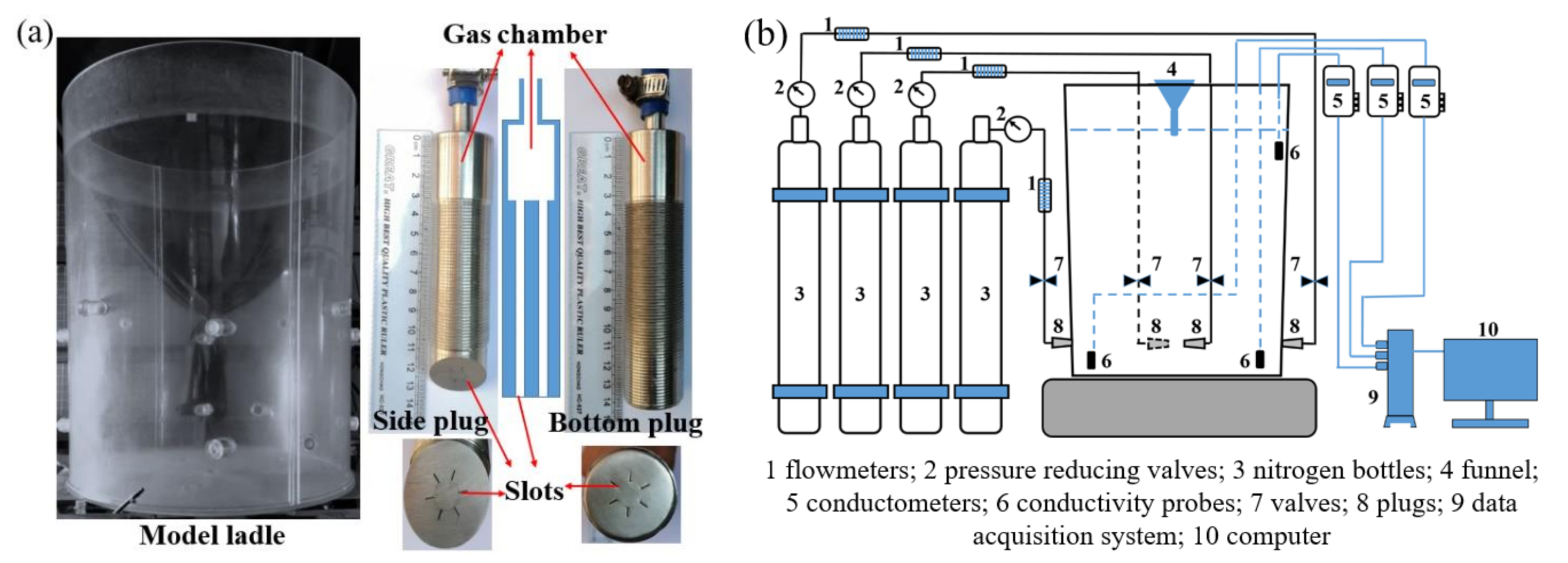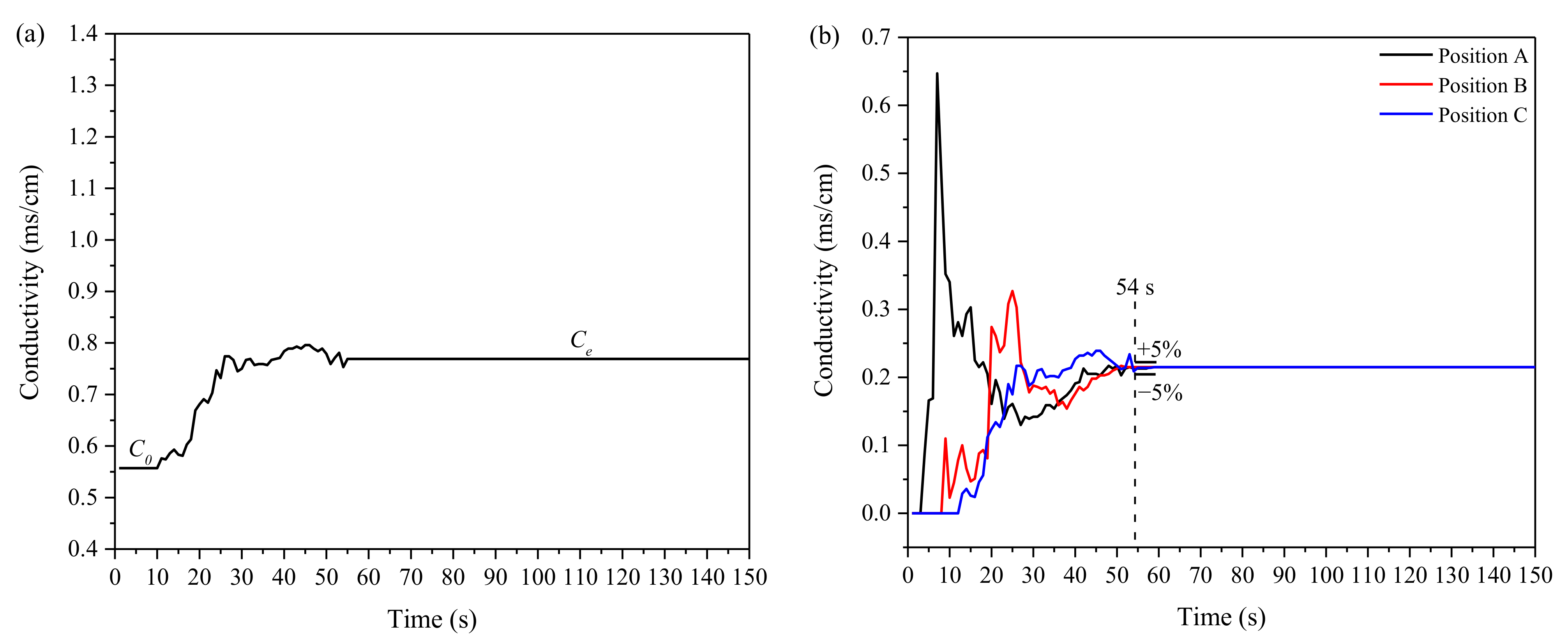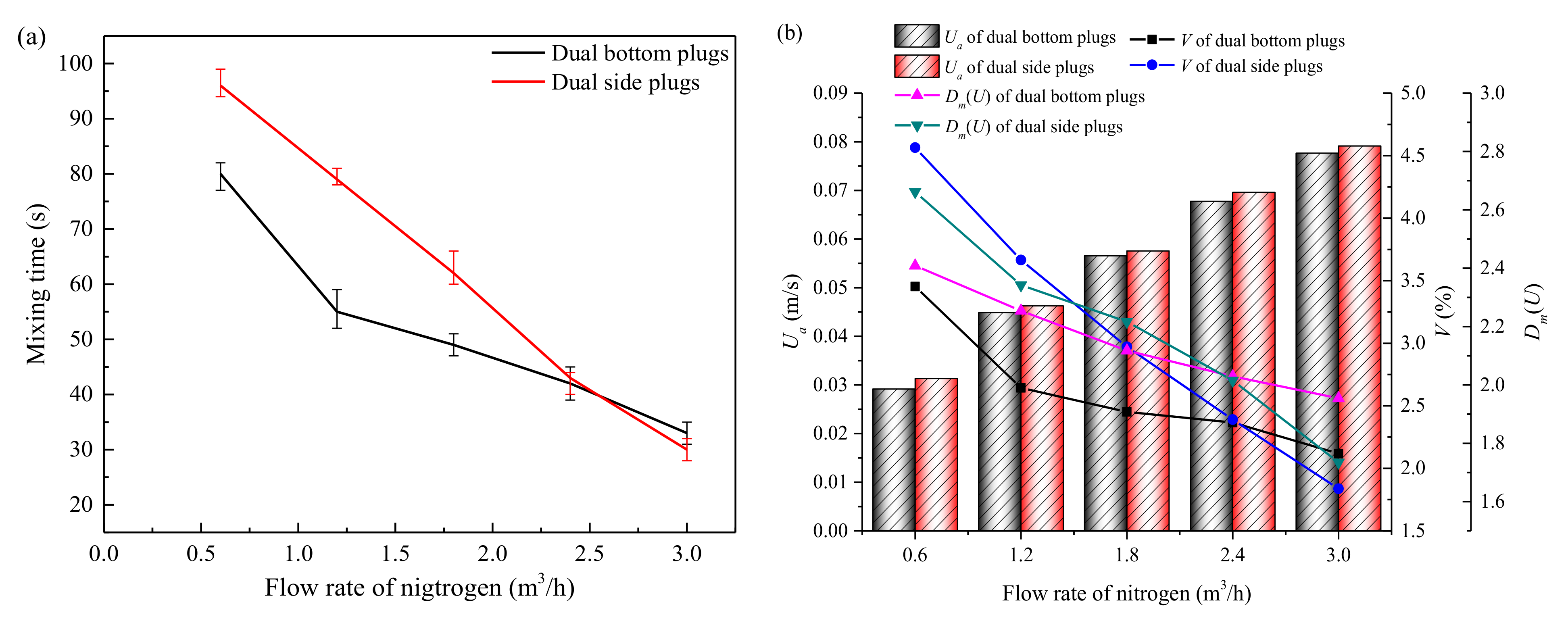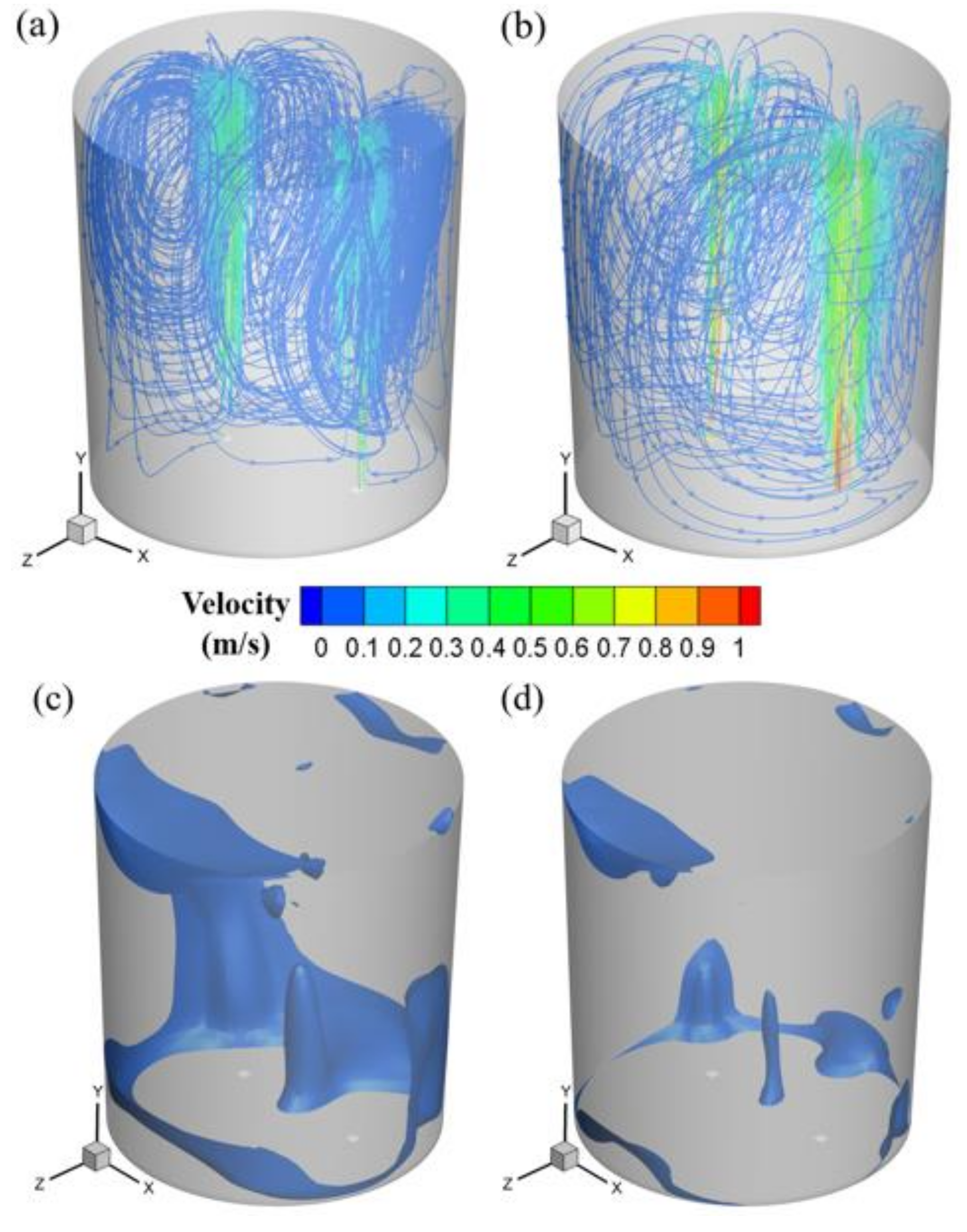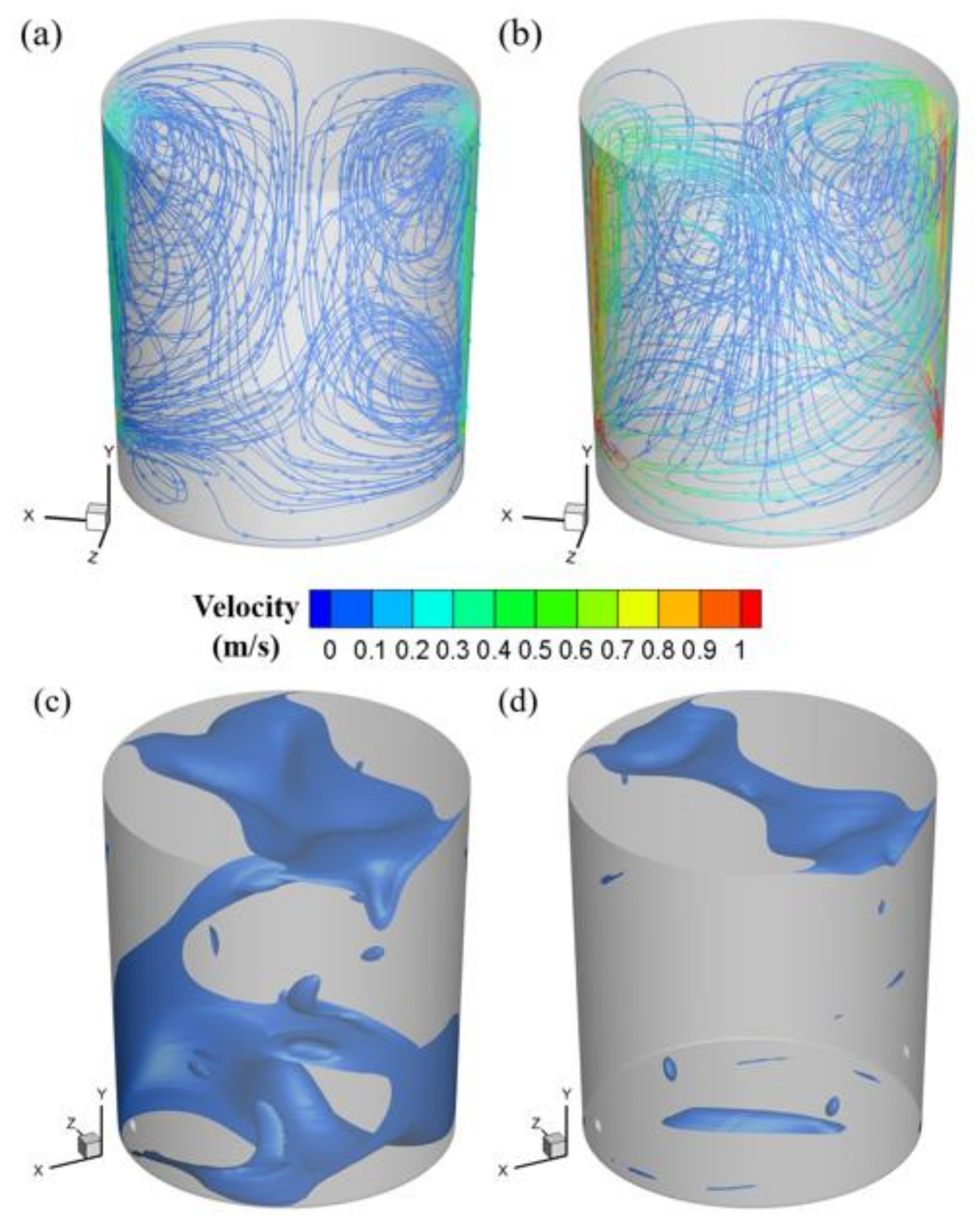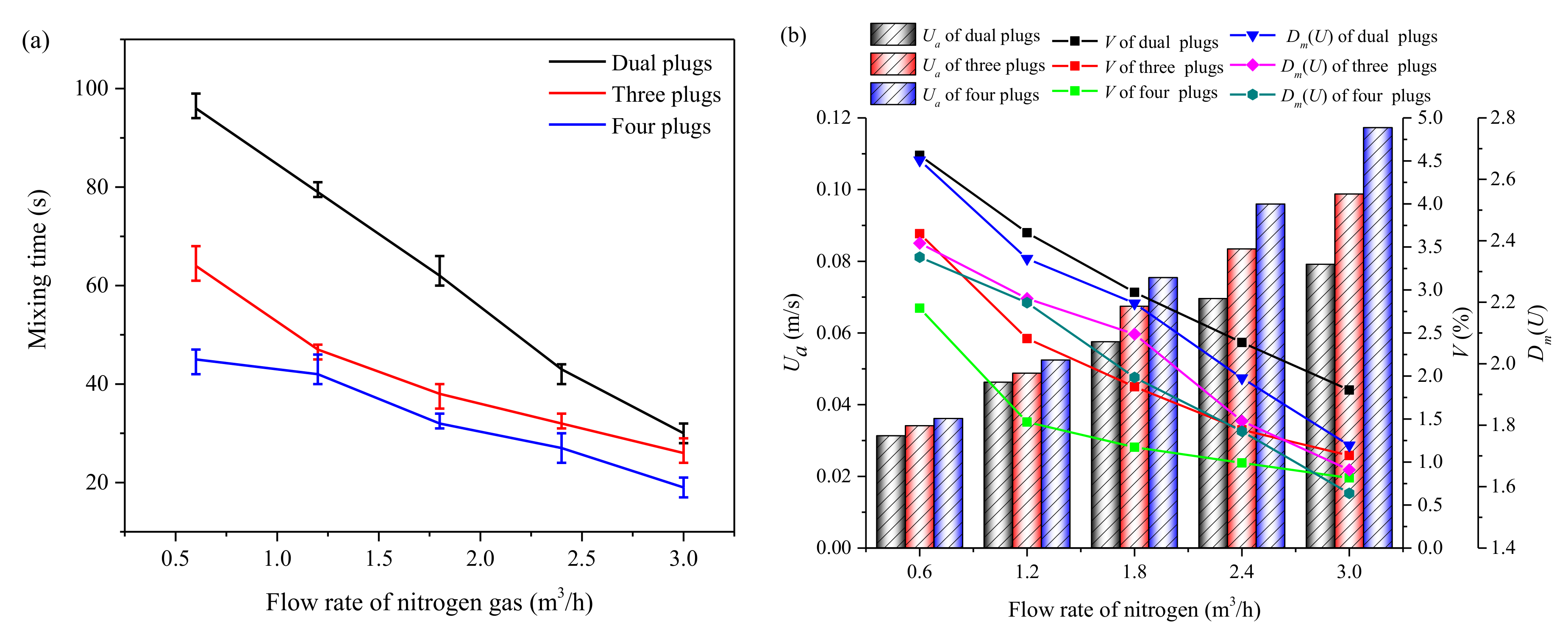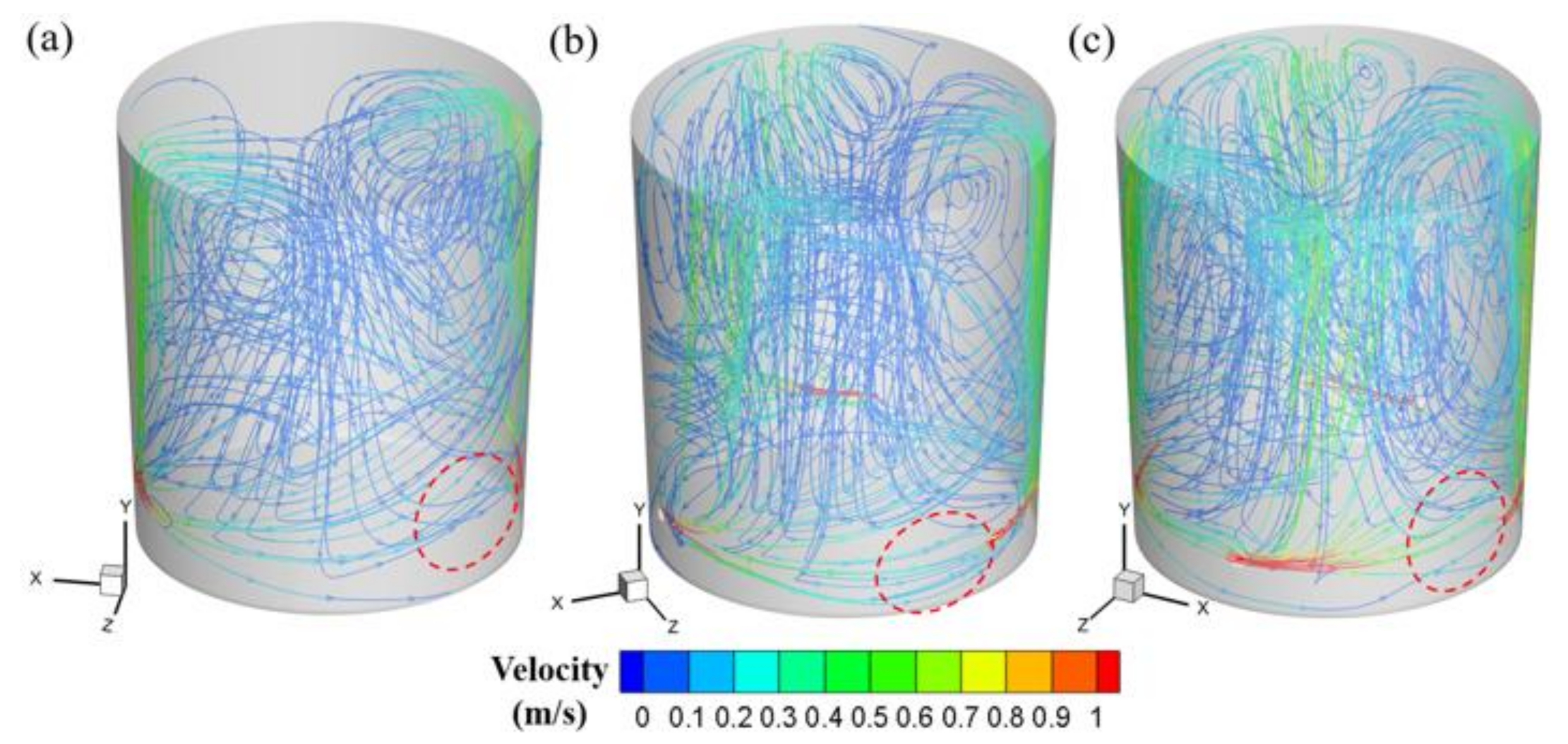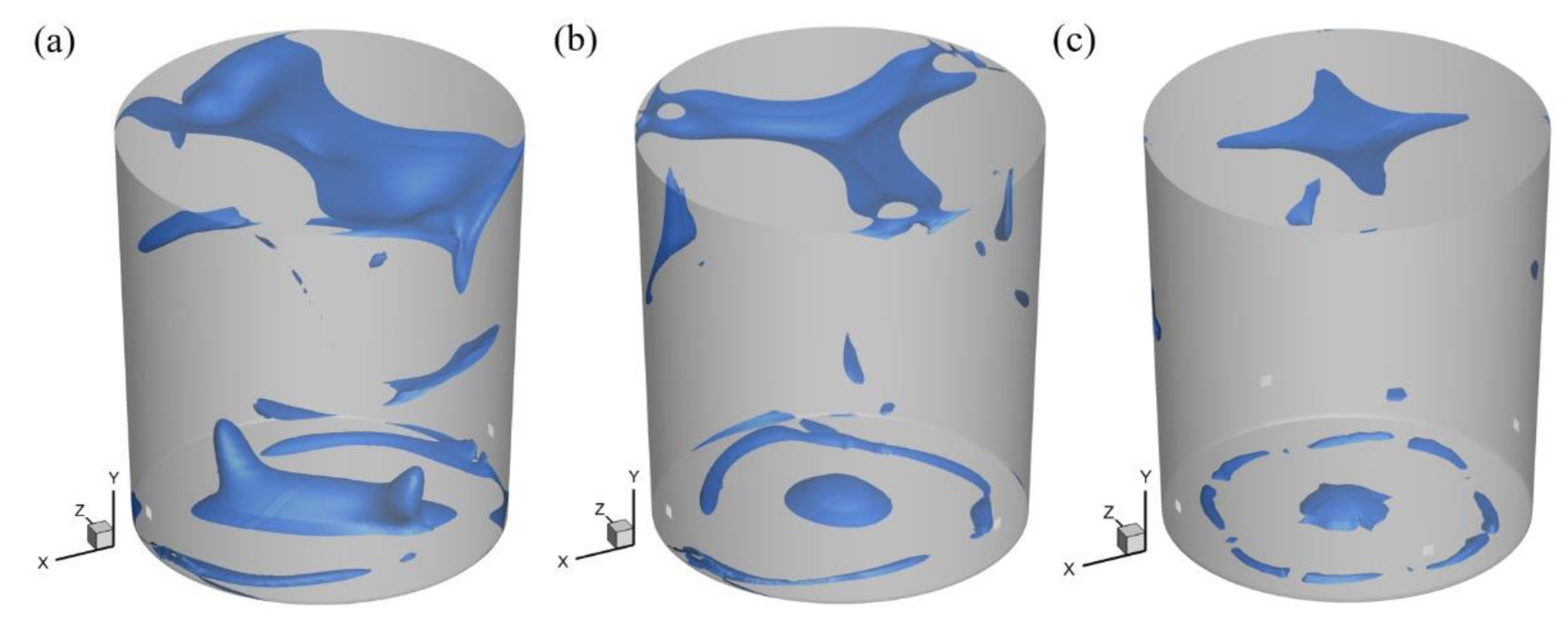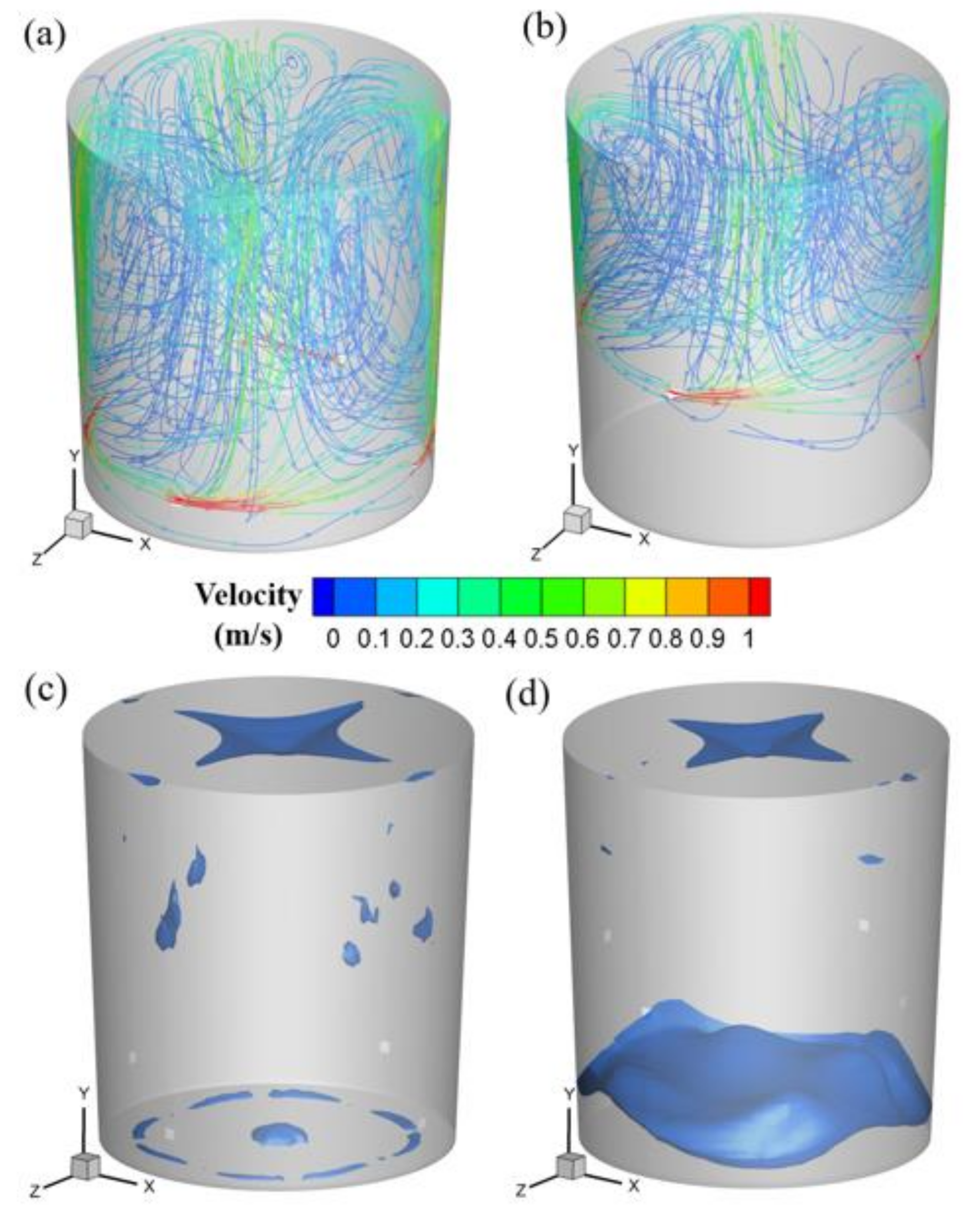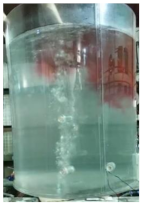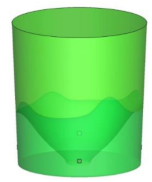1. Introduction
The alloying process is an important target during the secondary refining process. An alloying element could eliminate deleterious effects of other elements in molten steel and improve the physical and mechanical properties of steel products. Argon gas agitation is fully responsible for improving the fluidity of molten steel during ladle metallurgy. The chemical reactions [
1,
2], inclusion removal [
3,
4,
5], and homogenization of the alloy and temperature [
6,
7,
8] are closely related to the gas agitation in the ladle.
A large number of studies show that the mixing time has commonly been used to represent the gas agitation power in gas-stirred ladles [
9,
10,
11,
12,
13,
14,
15,
16]. In studies of Nakanishi [
9] and Sinha [
10], the relation between mixing time and agitation power were investigated by using a solution of 75% H
2SO
4 as a tracer in a water model ladle and derived as follows:
[
9] and
[
10] (where
and
correspond to the mixing time and agitation power, respectively). Some researchers [
11,
12,
13,
14] correlated the mixing time as simple functions of agitation power, liquid depth, and radius of the ladle with the experiment of tracer homogenization in a water modeling ladle. In the work of Mazumdar et al. [
13], the mixing time was defined as the time required for the monitoring point concentration to fall continuously within a 5% deviation of the well mixed/homogeneous value, and an empirical expression of mixing time was derived:
(where
and
correspond to the liquid depth and ladle radius, respectively). Zhu [
15] and Amaro-Villeda [
16] summarized mixing time correlations reported in the literature under different experimental conditions, such as gas flow rates, number of nozzles, nozzle radial position, and thickness of oil.
Physical modeling [
9,
10,
11,
12,
13,
14,
15,
16,
17,
18,
19,
20,
21,
22,
23,
24,
25,
26,
27,
28,
29,
30] was usually adopted to study the hydrodynamics and mixing phenomena in gas-stirred ladles with bottom plugs. The probe measurements of pH and conductivity were widely used to measure the mixing time of the tracer in a model ladle [
9,
10,
11,
12,
13,
14,
15,
16,
17,
18,
19,
20,
21,
22,
23,
24,
25]. Some researchers [
10,
15,
17] recognized that the mixing time is influenced by the addition position of the tracer and the probe positions in water modeling. It was reported that a ratio in the range of 1–1.5 for the height to the bottom diameter of the ladle is beneficial to the gas agitation in the ladle with bottom plugs [
11,
13,
18]. The high flow rate contributed to reducing the mixing time in the ladle with bottom plugs [
19,
20]. Some studies [
17,
21,
22,
23] discussed the influences of plugs’ configurations, such as plug number, plug radial position, and separation angle of dual plugs on the mixing time. Gómez et al. [
23] recognized that a separation angle of 60° provides the best mixing efficiency. Tang et al. [
24] found that the mixing time of every plug with different flowrates is shorter than that of every plug with same flowrate in a model ladle with dual bottom plugs. It has been reported [
16] that the top slag layer increases the mixing time. It may partly be because the overlying slag dissipates a part of the input energy, which causes the velocity of liquid recirculation and the level of turbulence decrease significantly [
25]. The energy dissipation rate for surface waves was less than 1%, and the energy dissipation rate for the pure liquid zone, plume zone, and spout was 36%, 22%, and 41%, respectively [
26].
Probe measurements provide only local concentration evolution, and the solid probes may affect the fluid flow in small model ladle. Planar laser-induced fluorescence (PLIF) is a nonintrusive technique and provides a detailed contour of concentration in an entire plane of the model ladle [
27,
28]. The PLIF technique was implemented to measure mixing time in a 1/17 water model of a 200-ton ladle furnace by Jardón-Pérez et al. [
27], who discussed the feasibility of the PLIF technique used to measure mixing time in physical modeling. The PLIF technique was experimentally implemented to measure temperature fields in a longitudinal plane of the gas-stirred ladle model by Jardón-Pérez et al. [
28]. Convective flow and turbulent diffusion were the two primary transport mechanisms of the mixing phenomenon [
29]. Particle image velocimetry (PIV) technology [
23,
27,
28,
30,
31,
32], used to measure the flow patterns and turbulent intensity of fluid in physical modeling, was an effective tool to understand the effect of fluid flow on the mixing phenomenon. González-Bernal et al. [
23] recognized that colorant and tracer dispersion techniques are complemented fairly well with PIV results, easily identifying areas of stagnation or recirculation within the model ladle. They found that the mixing time is significantly affected by the number, size, and location of the recirculation in the bulk of the fluid. The hydrodynamic performance was analyzed by Jardón-Pérez et al. [
30] through physical modeling and PIV measurements. The analysis showed that large mean velocity and turbulent kinetic energy led to a short mixing time. In the previous work of Jardón-Pérez et al. [
27], the turbulent kinetic energy contour plots obtained by PIV showed that the dead zone with small turbulent kinetic energy of eccentric injection is smaller than that of the centric injection. Therefore, the mixing time is lower for the eccentric injection than for the centric injection.
Numerical modeling [
21,
33,
34,
35,
36,
37,
38] was widely used to investigate the fluid flow and mixing phenomena in industrial ladles. A numerical model of alloy homogenization in a ladle with bottom plugs was developed by Geng et al. [
21] with the Euler–Euler approach to investigate the influences of gas flow rate and plug configurations on the mixing time. The mixing time was proportional to the value for the 0.2676 powers of gas flow in their study. Jauhiainen et al. [
33] studied the effect of the addition position of alloy on the mixing time in a gas-stirred ladle with the Euler–Euler approach. Cloete et al. [
34,
35] conducted a mathematical model of alloy homogenization in a gas-stirred ladle with the Euler–Lagrange approach. They found that the mixing time was influenced by the number of plugs, plug positions, and the ratio of height to the diameter of the ladle. Ganguly et al. [
36] discussed the effects of plug configurations and the addition position of alloy on the mixing time in a ladle with bottom plugs numerically. The effects of porous plug location, separation angle of two porous, and plugs gas flow rate on the fluid flow and the mixing phenomena were studied by Duan et al. [
37] using a Eulerian–Lagrangian approach. They recognized that the separation angle of 90° is recommended to improve the flow field and mixing phenomena. The flow and separation phases in a whirlpool were built by Stachnik and Jakubowski [
38] using a three-phase VOF (volume of fluid) approach. Their research deems the VOF three-phase model suitable to predict sedimentation and accumulation of sediment.
The above studies mainly focused on bottom blowing in a gas-stirred ladle. However, the fluid flowing, which is driven by bubbles was mainly along the vertical direction in the ladle with bottom blowing. The fluidity of fluid at the bottom edge of the ladle with bottom blowing was poor [
39,
40]—the dead zone where the fluid fluidity delayed the mixing time [
10,
27]. Few studies reported side blowing in gas-stirred ladle. In addition, most previous studies [
9,
10,
11,
12,
13,
14,
15,
16] just reported the effect of agitation power on the mixing time. Few studies discussed the effects of the uniformity of fluid velocity distribution on the mixing time.
For this paper, the comparisons of fluid flow and mixing condition in model ladle between side blowing and bottom blowing were investigated by physical and numerical modeling together. The different working conditions of side blowing, such as flow rate, plug number, and installing height of plug were considered. The effects of fluid flow characteristics especially the fluid average velocity and the fluid velocity distribution on the mixing time were analyzed.
